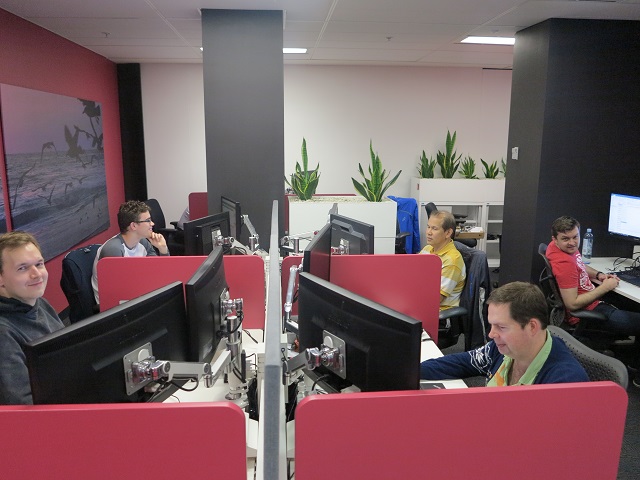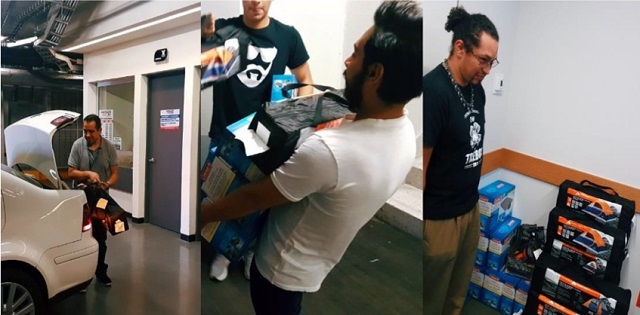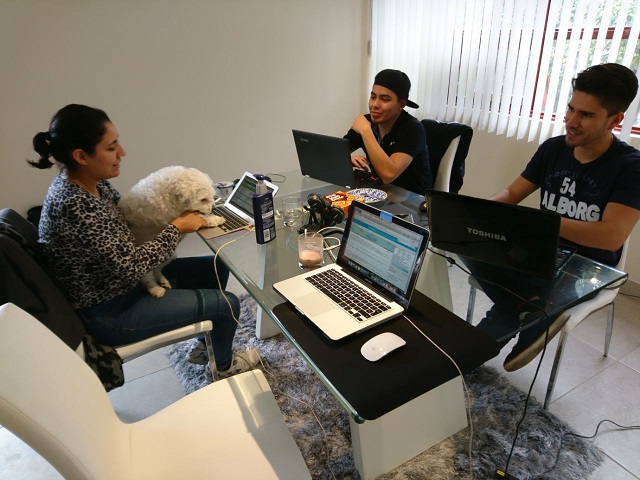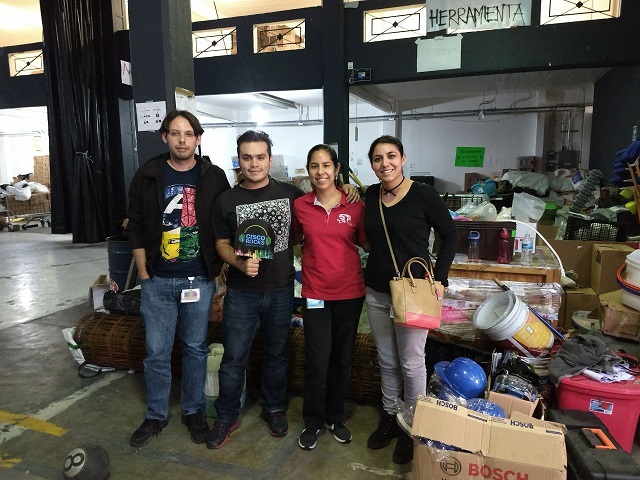2018-April-30
Did you know? You can share this story using the social media icons on the left. Please include the hashtag #WeAreCisco. You can also rate and comment on the story below.
TAC Team Stands Strong After Mexico Quake

When the earthquake struck, Cecilia Garcia was in a meeting on the 14th floor of our Global Services Center (GSC) in Mexico City. Even before the building stopped swaying, she left her office to check on her team. Then she helped people evacuate.
“Many were still in shock,” says Cecilia, a technical support manager who is part of Cisco’s Global Technical Assistance Center (TAC) team. “I didn’t realize how bad it was until we were on the street, and some engineers told me about collapsed buildings they had seen in the city.”
It was bad indeed. The magnitude 7.1 earthquake that struck last September killed more than 300 people in the capital and other parts of Mexico. Oddly enough, the quake hit exactly 32 years to the day since a 1985 quake killed some 10,000 people in Mexico. One benefit of that coincidence was that many companies in Mexico City, including Cisco, choose that day to conduct earthquake drills. Employees at GSC evacuated the building as part of the drill—just hours before the real quake struck.
It may have helped. None of GSC’s roughly 300 employees were hurt. Nor was there any damage to the state-of-the-art GSC building, which was inaugurated in 2015 and is one of three Cisco offices in Mexico City. However, the quake knocked the entire site offline. The outage was a big deal because GSC supports customers worldwide, including giants like Verizon, AT&T and Telstra, who rely on TAC engineers to resolve their most pressing technical issues.
“We’ve never lost a complete site like that before,” says Allyn Medway, director of our Technical Services division in Sydney, Australia. “But the beauty of it was that everyone from around the world just jumped in to help.”

Engineers on the Front Lines
One of the first engineers to help get the site back online was David Roman. That day, he was on vacation in Guadalajara about 300 miles west, but had gone into the local Cisco office to do some work.
“When the quake hit, I was in the middle of a Webex meeting with my colleagues in Mexico City,” recalls David, a customer support engineer who’s also part of the TAC team. “I saw them getting scared and nervous on the video, and suddenly the Webex went down. I thought, what happened?”
Once he learned his colleagues were safe, David went into overdrive to help them and to maintain TAC services to customers. As the only member of his team who was online, he became the point person in dealing with leadership and the U.S. team. He cut short his vacation and got in touch with duty managers to establish the status of TAC teams. He helped with contingency plans, moving engineers to Guadalajara and the United States to keep working cases. For the most critical cases, he enlisted the help of colleagues in the U.S., Europe and Asia.
“Cases were still coming in,” he recalls.
David also checked on the safety of colleagues and their homes in the capital. Many had to leave laptops, backpacks, keys, wallets and even their cars in the building when they evacuated. They could not retrieve them until the structure was deemed safe at least a week later.
So people improvised. Cecilia, who could not return to her home for days, was one of three managers who worked into the night setting up laptops that were in stock. She helped deliver them to colleagues the next day so they could get back to work, brushing up her technical skills along the way.
While keeping the business running was a top priority, HR and management made it clear to employees that they were free to help the larger community too. Many collected and packaged food and supplies to be sent to the worst-affected areas of the country. Others took to the streets to hand out water or food, and to volunteer in rescue operations.
Program manager Jesus Garcia turned his home into a makeshift office, hosting about eight displaced engineers in the days after the quake. He bought extra bandwidth so they could work, and he helped restore their CVO (Cisco Virtual Office) connections. He also took inventory of missing belongings and helped reunite them with their owners.
“It was a big mess, but we had support from other teams,” Jesus says.
We’ve Got Your Back!
To provide round-the-clock technical support to customers, TAC responsibilities are handed off from one theater to another around the world. Australia takes over from the Americas, so it was TAC engineers in Sydney who bore the brunt of the outage in Mexico. As engineers there came into work and learned about events in Mexico, they immediately jumped online and onto phones to help however they could.

“The first day was amazing,” Allyn recalls. “People were just focused on doing the right thing. Then on Day 2, people streamed in as early as possible to make sure Mexico was OK. Many cancelled PTO and worked 12- to 14-hour days for the next five days.”
David saw colleagues around the world logging in earlier or later than usual and reaching out to ask if he was OK. Many engineers at GSC are in their 30s—too young to remember the Big One of ’85—and were blindsided by the disaster. As a show of solidarity, TAC engineers in Sydney even put together a video declaring “We got your back!” to reassure their Mexico City counterparts they were not alone.
“The video was amazing for keeping up the spirits of the team,” David says. “It was great to see that culture from Cisco, and TAC specifically.”
Customers also took note. Amazingly, the TAC teams worked together so tightly that customers didn’t even suspect that a site had gone down. As Cisco’s business continuity plan went into effect, not a single case was escalated to Cisco executive leaders.
“The ability to manage a complete site outage so effectively was an eye-opener to some customers,” Allyn says. “Along with our culture, that to them was why Cisco was the vendor to go with.”
For Allyn, the numerous acts of heroism and self-sacrifice were remarkable to behold.

“TAC team members all over the world pulled together to help—like a ripple from a stone thrown in a pond,” he says. “This amazing compassion and empathy is in the DNA of TAC. We’re a big family, and everyone just wanted to make sure we didn’t lose anyone in that family.”
About GSC
The GSC in Mexico City is a major nerve center. In addition to supporting customers, it hosts the Global Technical Center, the Global Delivery Center and the Latin America TAC.
Globally, TAC provides round-the-clock technical support services to customers, partners and resellers. TAC processes 2.2 million cases a year, representing a half-billion dollars in business for Cisco.
Note: Don’t confuse TAC with TacOps (Cisco Tactical Operations), which offers help for free during emergencies by setting up highly secure communications on the ground.
Related Links
- Cisco Global TAC
- Business Continuity Plan at Cisco
- "We’ve Got Your Back" video
- Mexico Office says “Thanks” video
- Find jobs at Cisco
Connect everything. Innovate everywhere. Benefit everyone.
Share your thoughts!
Log in to rate and commentShare your thoughts on the story here!